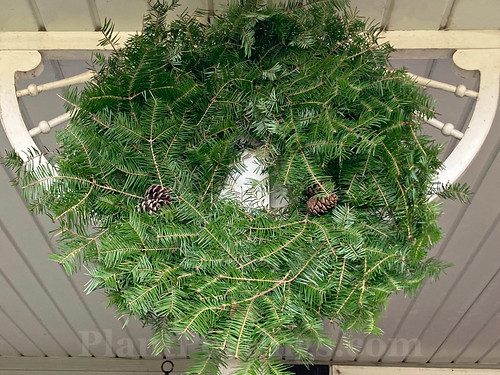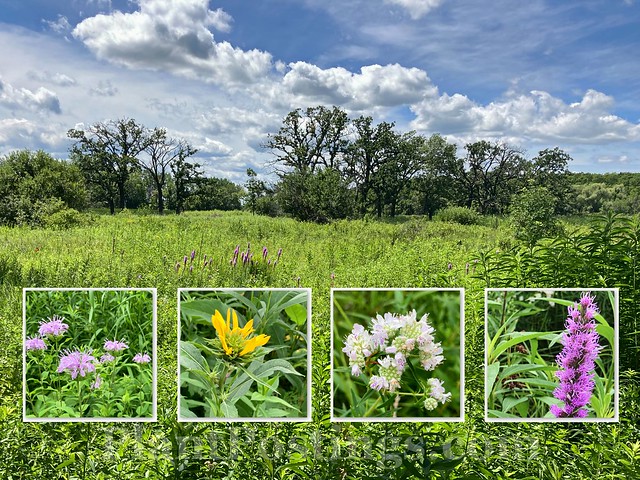
December 21, 2022
Happy Solstice and Blessings for the Days Ahead
Labels:
candy,
celebration,
Christmas,
decorations,
desserts,
dried seeds,
frosted garden,
Happy Holidays,
Happy New Year,
holidays,
Merry Christmas,
pine cones,
warm fire,
winter,
winter solstice,
Wordless Wednesday
December 09, 2022
Before the Snow

Autumn and winter are playing tag in my part of the world lately. We've had cold days and snowy days, followed by rainy, sunny, and relatively mild days. This morning, Mother Nature blanketed the garden with a fresh coat of snow. It will probably melt on the weekend with milder temperatures, but it's pretty while it lasts.
Before the snow, I took a quick tour around the garden yesterday to note the highlights of the late autumn garden.

Most years, the Epimediums ('Rubrum' here) are chewed to the ground by the rabbits this time of year. Rabbit activity, for some reason, is lighter this autumn.

I like the stacking here of the Juniper shrub, Epimedium x warleyense, and the Ajuga groundcover.

Sedum 'Autumn Joy' is a favorite in the garden this time of year with its colorful seed heads.

Moss on rocks and other surfaces keeps the green character going throughout the winter.

The Hellebores retain their umbrella foliage until I trim them in the spring.

I'm trying to get some swaths of Hakone grass (Hakonechloa macra) going, to spill over the rock wall. I've had limited success (rabbit damage, slow growth, etc.) But this one survives with a little help from caging at the base. I hope it will fill in more in the years to come.

I leave the garden seed heads, including Echinacea, up over the winter for bird food and for insects that might be overwintering in the stems. I think they also add character to the winter garden.

This combo of Coneflowers (E. purpurea) and Blue Mistflowers (Conoclinium coelestinum) is fun.

Most years, the Epimediums ('Rubrum' here) are chewed to the ground by the rabbits this time of year. Rabbit activity, for some reason, is lighter this autumn.

I like the stacking here of the Juniper shrub, Epimedium x warleyense, and the Ajuga groundcover.

Sedum 'Autumn Joy' is a favorite in the garden this time of year with its colorful seed heads.

Moss on rocks and other surfaces keeps the green character going throughout the winter.

The Hellebores retain their umbrella foliage until I trim them in the spring.

I'm trying to get some swaths of Hakone grass (Hakonechloa macra) going, to spill over the rock wall. I've had limited success (rabbit damage, slow growth, etc.) But this one survives with a little help from caging at the base. I hope it will fill in more in the years to come.

I leave the garden seed heads, including Echinacea, up over the winter for bird food and for insects that might be overwintering in the stems. I think they also add character to the winter garden.

This combo of Coneflowers (E. purpurea) and Blue Mistflowers (Conoclinium coelestinum) is fun.
Labels:
autumn,
evergreens,
hardy plants,
seasons,
seedheads,
snow,
winter
November 25, 2022
The Latest-Blooming Alliums

The garden is sleeping now, but some plants, and even blooms, are holding on to bits of color during the transition to winter. One of those plants is the late-blooming Allium (A. thunbergii), 'Ozawa.' The photo above is from earlier in the season (mid-October), but this is the latest-blooming Allium in my garden. 'Ozawa' is hardy to USDA zone 4.

It's a petite little variety, only about a foot tall, and it forms a compact clump that comes back every year, but doesn't spread much (I have two clumps). Unlike my other Alliums, this one must be caged; if not, unfortunately the rabbits will eat the buds and blooms. Although there are fewer pollinators active when it's blooming in October and November, I have seen some on it; particularly honeybees and some flies.
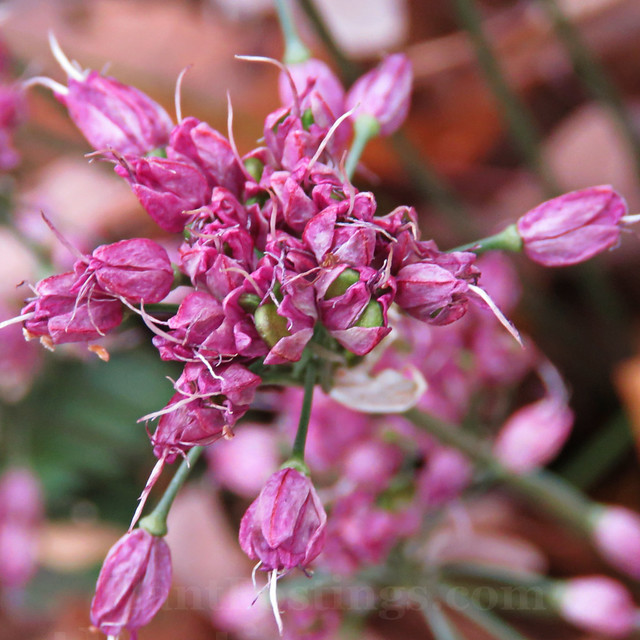
It's even pretty and colorful after the blooms fade and the seeds start to form. At this point, it tends to shift from a light lavender color to bright pink.

Last week, after our first snow (which is melted now), I noticed the Allium's sweet spot of color. Beyond the rabbit challenge, it's any easy addition to the garden for late-season interest.
*************
I hope my American friends had a Happy Thanksgiving, and Happy Holidays to all in the weeks ahead!
Labels:
alliums,
cold-hardy plants,
late bloomers,
perennials,
pollinators
November 04, 2022
The Fuchsias of November 2022

This is an unusual November for my part of the world. We've had light frost, but it's been followed by days of very mild weather, similar to what we'd usually experience in September. While most perennials have gone dormant and many annuals have passed, some plants that can take a light frost are holding out. This includes my hanging baskets of Fuchsias.
I have many around the property, and most have not been sheltered from the cold nights or covered at all. They're actually looking better than they did during the hot summer days.
I don't know the names of most of these Fuchsias, because they came in mixed baskets without tags. The last two photos, however, are 'Markinka,' which I bring in to the sunroom for the winter every year, and the buds of 'Dark Eyes.'

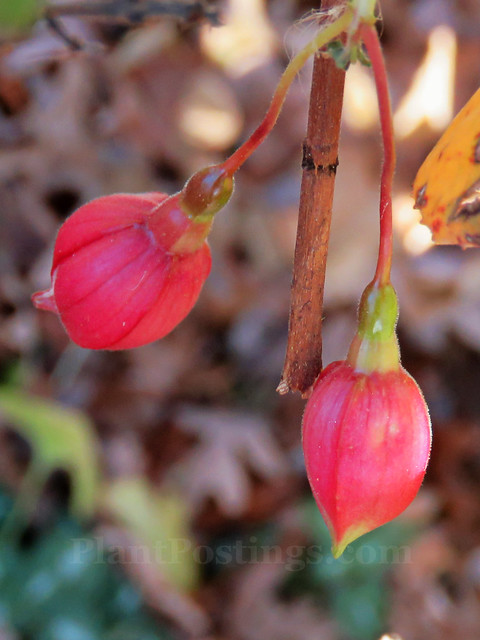
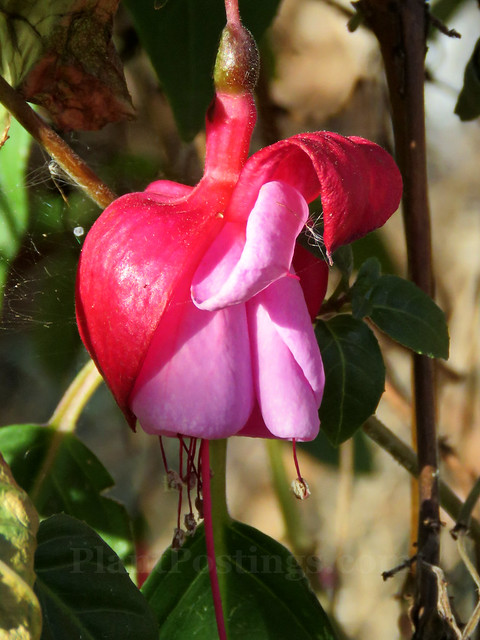













We've been spoiled with this mild autumn. I'm not ready for the cold days of winter ahead.
Labels:
autumn,
buds,
fruit,
Fuchsias,
hanging baskets,
hummingbirds,
November blooms,
warm autumn
October 30, 2022
The Butterflies of 2022
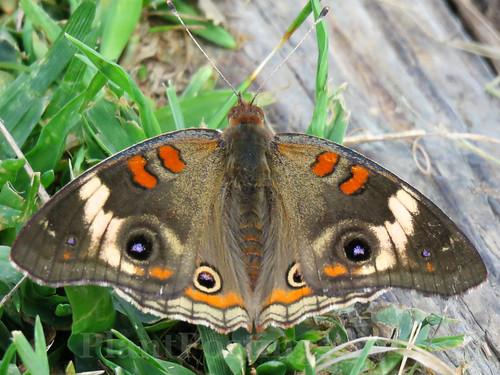 |
| Common Buckeye |
We've flirted with frost at my house, but we haven't had a hard freeze. There are still butterflies fluttering through the state, which is a special joy at this time of year. During the "warm" months, I enjoy tracking and counting butterflies during my hikes, and reporting my sightings to wisconsinbutterflies.org.
The numbers of monarchs were down this past season, but hopefully it was just regional and we'll have more next spring, summer, and fall. What follows are a few of the butterfly sightings of the past year, in no particular order. There were many more; this is just a small sample:
All photos were taken in local natural areas, botanical gardens, and my own property. While there likely will be more butterfly sightings yet this fall, the season is winding down. I'll miss them during the winter, and look forward to sightings in the year ahead.
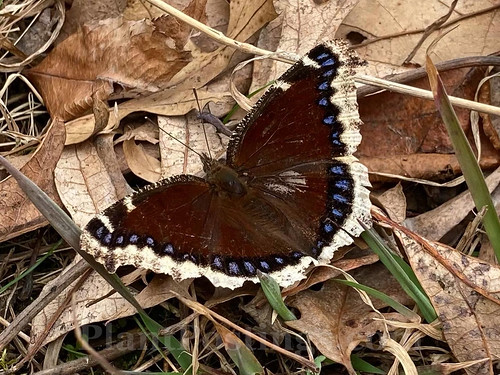 |
| Mourning Cloak |
 |
| Tiger Swallowtail |
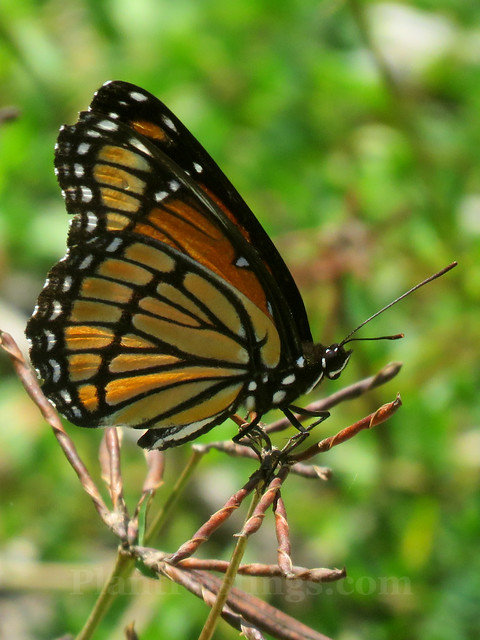 |
| Viceroy |
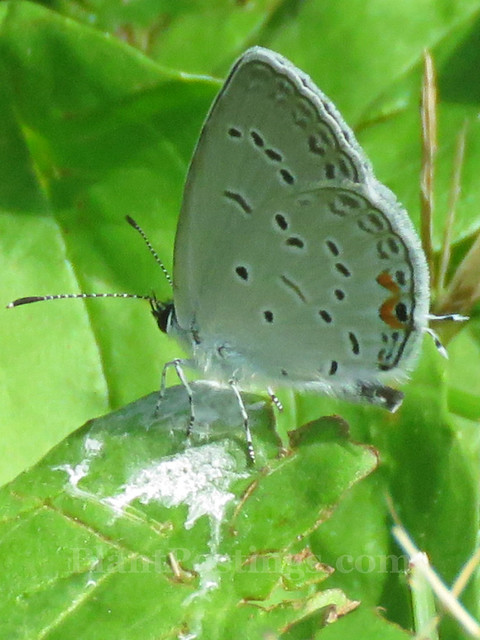 |
| Eastern Tailed-Blue |
 |
| Silver-Spotted Skipper |
 |
| Peck's Skipper |
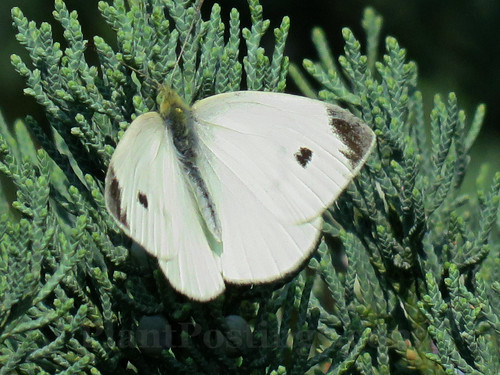 |
| Cabbage White |
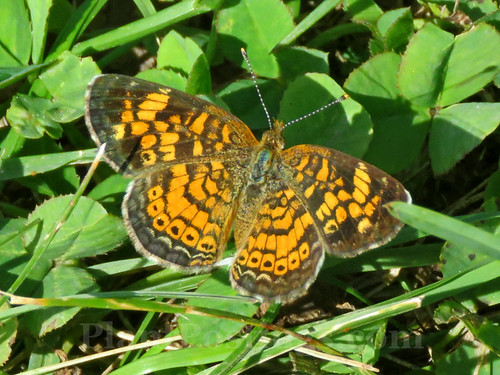 |
| Pearl Crescent |
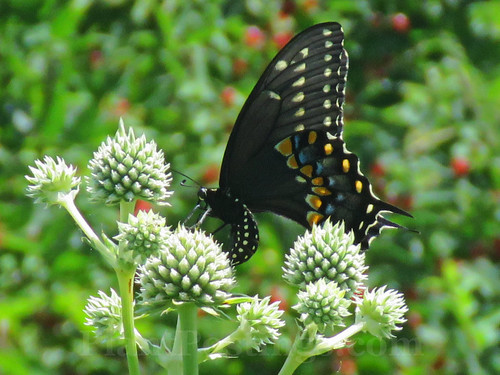 |
| Black Swallowtail |
 |
| Painted Lady |
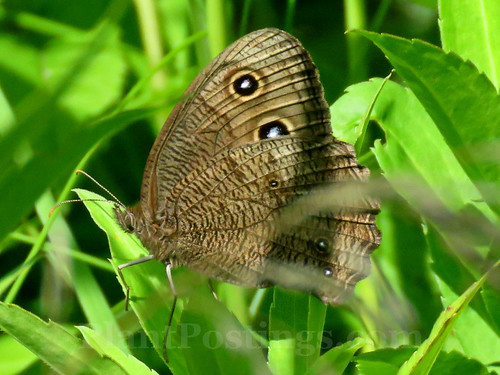 |
| Common Wood-Nymph |
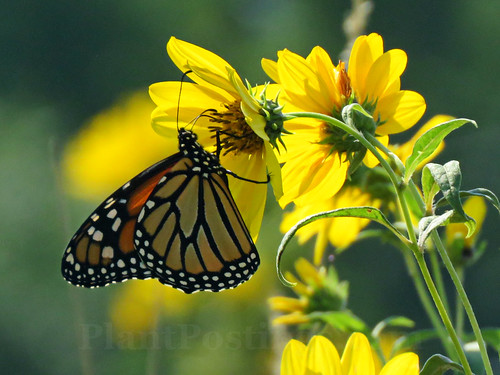 |
| Monarch |
All photos were taken in local natural areas, botanical gardens, and my own property. While there likely will be more butterfly sightings yet this fall, the season is winding down. I'll miss them during the winter, and look forward to sightings in the year ahead.
Labels:
autumn,
beauty,
butterflies,
citizen science,
fall,
joy,
spring,
summer
October 19, 2022
Wordless Wednesday: October Fen
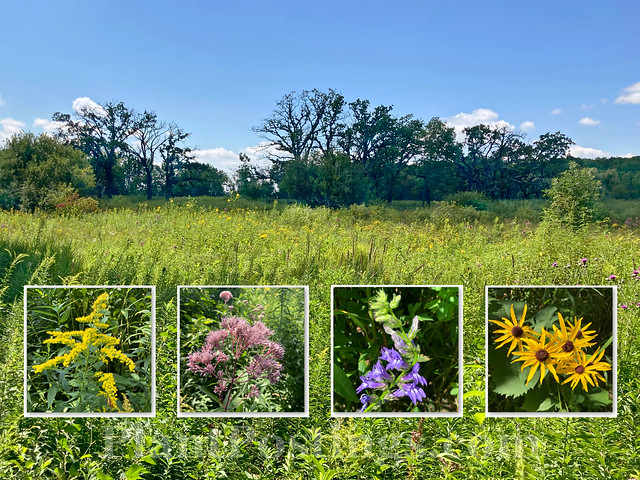 |
| Late August Fen [Insets, L to R: Canada Goldenrod (Solidago canadensis), Joe-Pye Weed (Eutrochium maculatum), Great Blue Lobelia (Lobelia siphilitica), Sweet Black-Eyed Susan (Rudbeckia subtomentosa)] |
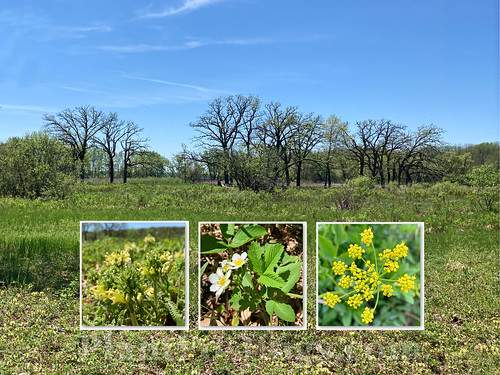 |
| May Fen [Insets, L to R: Wood Betony (Pedicularis canadensis), Wild Strawberry (Fragaria virginiana), Golden Alexander (Zizia aurea)] |
 |
| January Fen |
Labels:
autumn,
autumn plants,
fen,
lake,
Lake Kegonsa State Park,
landscape,
Midwest,
nature,
seasons,
sky scenes,
state parks,
Wordless Wednesday
September 21, 2022
A Passion for Experiments

It's fun to grow new plants, and it's especially fun to compare different methods, settings, and conditions for the same plant. Last year, I started several Purple Passion Flower plants (Passiflora incarnata) from seed. This plant is native just to the south of us in Central Illinois and throughout the Southeast U.S.
The seeds grew well last year, and they came back this past spring. But I didn't see any flowers...
Until a couple of weeks ago! I was adjusting something above the potted plant when I saw the first flower. What a sweet surprise!
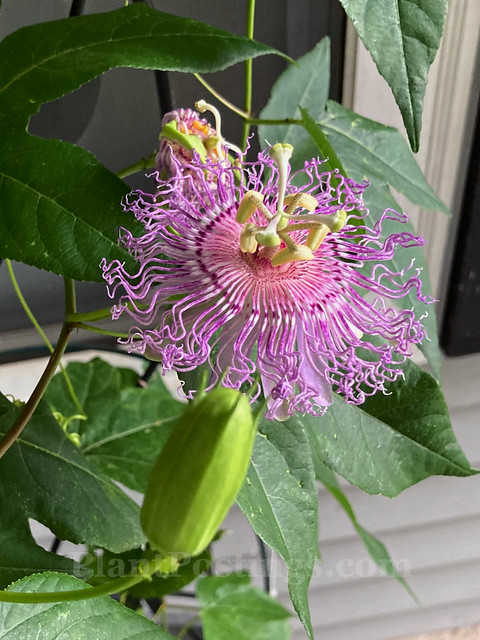
Next, I realized there were several additional buds, and it's been a joy to see them all bloom in succession.

Here are the pot and the trellis the flowering plants are growing on. They spent the winter indoors in the sunroom, going nearly dormant and then popping back in the spring. They really took off when I put them out on the front porch facing the afternoon sun.

I also planted some vines in the soil on the west side of the house. They came back even stronger, but they haven't flowered. Maybe next summer? I covered these plants in the soil with heavy mulch for winter, since we're USDA zone 5--borderline for winter survival of this plant. This is probably the warmest spot in my garden, getting sun and heat from the house throughout the entire year.

Next, I realized there were several additional buds, and it's been a joy to see them all bloom in succession.

Here are the pot and the trellis the flowering plants are growing on. They spent the winter indoors in the sunroom, going nearly dormant and then popping back in the spring. They really took off when I put them out on the front porch facing the afternoon sun.

I also planted some vines in the soil on the west side of the house. They came back even stronger, but they haven't flowered. Maybe next summer? I covered these plants in the soil with heavy mulch for winter, since we're USDA zone 5--borderline for winter survival of this plant. This is probably the warmest spot in my garden, getting sun and heat from the house throughout the entire year.
It's been a fun experiment to compare the potted plants with the outdoor garden plants. I hope they'll all survive and thrive next year, too. Will they fruit?

I've noticed a few pollinators on them, and apparently P. incarnata plants are self-fertile, meaning they don't need a partner plant to be pollinated and bear fruit.

It's so entertaining to watch the pollinators move among the dramatic stigmas and anthers and other flower parts.

Passion Flowers are so beautiful and so unique.


I've noticed a few pollinators on them, and apparently P. incarnata plants are self-fertile, meaning they don't need a partner plant to be pollinated and bear fruit.

It's so entertaining to watch the pollinators move among the dramatic stigmas and anthers and other flower parts.

Passion Flowers are so beautiful and so unique.

Every part of this plant is beautiful--from the foliage to the flowers to the sweet tendrils that wrap around the supports and curl around each other. New adventures with plants are so gratifying!
Labels:
garden experiments,
nearly native plants,
new garden plants,
passiflora,
Passion Flower,
pollinators,
vining plants

